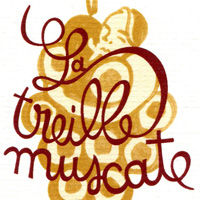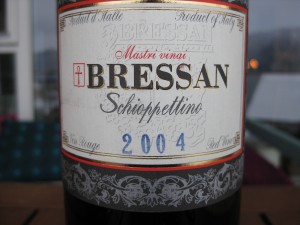For those of you who follow my writings, my last publication was a producer profile on the philosophy and wines of Bressan from Friuli, Italy. I have been speaking rather loudly about natural wines for some time now and I will again try and get my point across about how when well made, these wines are alive. The wines of Bressan are no exception to this rule – they are most certainly alive and have one hell of a “shelf life”.
I opened his wines and began to write about them on December 26th, 2009. I wrote about my findings and continued to taste the wines over the course of the next few days. On December 30th, I left for Poland where I remained until the 13th of January. I left approx 1/3 of a bottle of the 2006 Verduzzo Fruilano and 1/3 of a bottle of the 1999 Pignol in my fridge. On the evening I returned home, I removed the two bottles from the fridge and poured myself a half glass of each, and was not very surprised to find that the wines were still showing well. There was no sign of turning to vinegar and the wines were still very fresh and drinkable. This was 18 days after I opened the wines!
Tonight I finished what was left of the Pignol, a whopping 22 days after being opened, and it was showing remarkably well. If I have to be fussy, I could say that the fruit had faded a tad…(but only a tad!). This being said, the wine was very drinkable (which I did) and showed no signs of negative volatility nor had it become vinegar and in fact improved again once it sat in the glass for 5 mintutes… This is a 10 year old wine opened 22 days ago and I enjoyed it as much today as the day I opened it.. And it was made without the use of sulfur. Sulfur is a preservative that many conventional wine makers say you cannot make a stable wine without it… really?
Before my current position at Jacob’s Bar & Kitchen, where I have the largest selection of natural wines in Norway (and I sell them almost exclusively to the tune of about 250-350 bottles a month (perhaps more)), I managed what is considered the best wine bar in Norway. A wine bar that boasted a wine list of over 500 titles and the “Wine Spectator Best of Award of Excellence”. Although I managed to sneak a few natural wines on the list here and there, the wine consisted of mostly a very well selected group of “conventional” wine makers. Although we prided ourselves in hand selecting small wine makers and growers, they very often used selected yeasts and sulfur in wine making. I speak from the 4-years of experience managing this bar when I say that almost every bottle of wine that was open more than 3 or 4 days, ok sometimes 5 days, was sent to the kitchen as “waste”. This included expensive, well-made wines.
In my last 12 months of running the wine program for Jacob’s Bar & Kitchen, I sell almost exclusively organic, biodynamic an natural wines. I have a wine list of over 15 unsulfured wines, and I hardly send a bottle of wine to the kitchen as waste.
I have experience with other natural wines being long lived like the wines of Frank Cornelissen, Domaine Le Mazel (vertical tasting coming soon!) and Clos Roche Blanche (whose wines I have tasted over a one week period) for example. I have deliberately set aside opened bottles of wine from the likes of these producers and tasted them over the course of weeks only to find that they almost always improve over the course of 10 days. I often find they level out and remain the same through the 14th day after being open, and most will begin to fade after day 18.
Why does this happen? I am not sure that I have the explanation for this. I feel that these wines are alive. Sulfur may be a preservative, but what kind of perservative kills its host?! Well-made wines without sulfur in my opinion are alive, more stable, have more interesting aromas and I am able to drink more and feel better the next day.
I just have to finish by saying that I simply write what comes spontaneously to me.. It’s what I feel. In this case it’s also based on my experience and I challenge and welcome anybody who wants to discuss their personal findings on this subject, after all, I just want to learn as much as possible about the life that these wines possess.
















